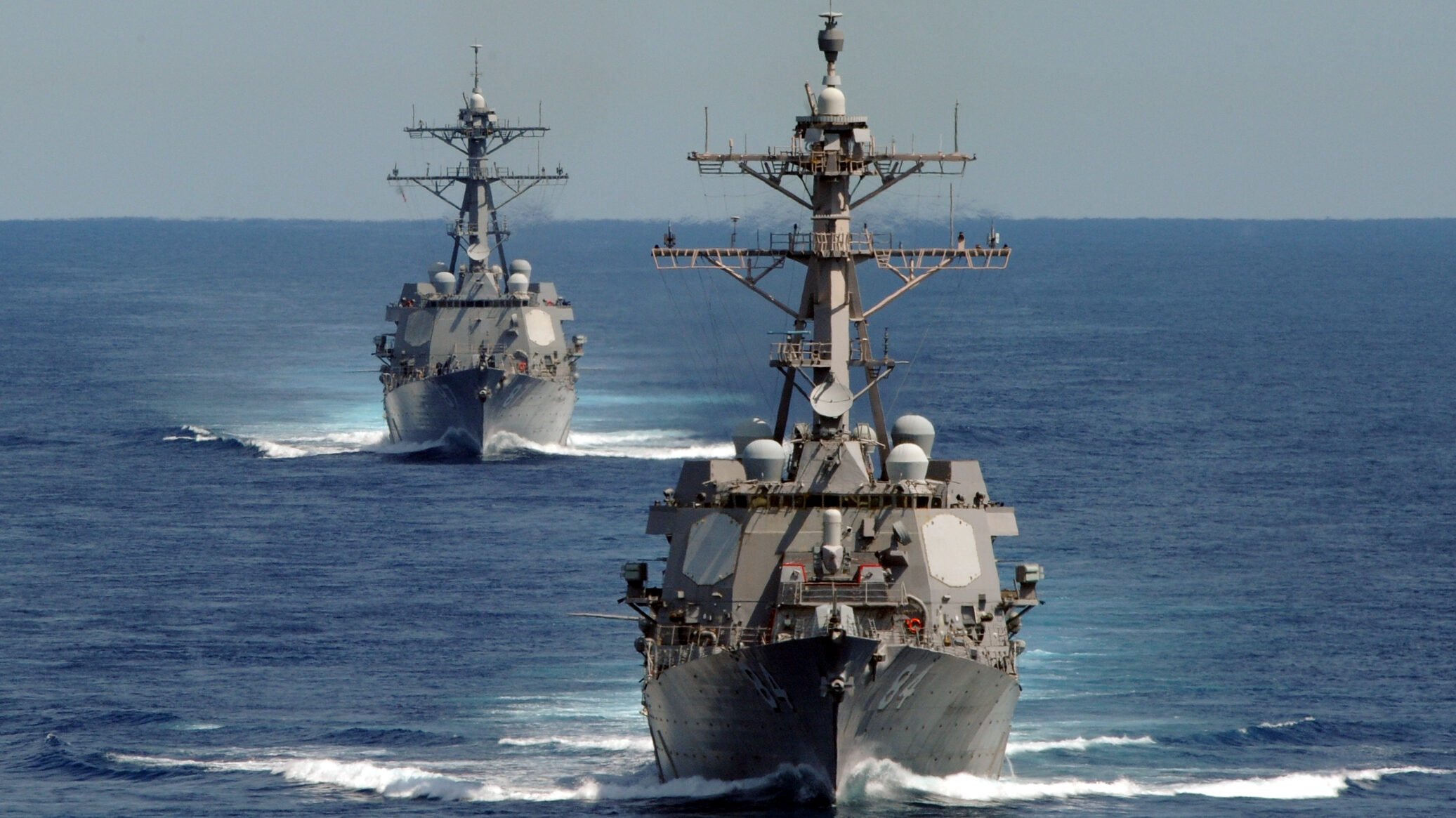
Arleigh Burke-class guided-missile destroyers USS Bulkeley and USS Mason (Navy photo by Seaman Jared M. King)
SNA 2023 — With the fiscal year 2023 defense policy and spending bills signed into law, the Navy’s top admiral said lawmakers clearly chose “alternate three” of the long-term shipbuilding plan, the option that assumes increased funding and an ultimately larger fleet.
“The Congress has been very bullish on shipbuilding. I think they’ve been very clear in terms of what their expectations are,” Chief of Naval Operations Adm. Michael Gilday told reporters on the sidelines of the Surface Navy Association’s annual symposium on Tuesday. Gilday cited the overall $4 billion increased funding for shipbuilding over the president’s budget request, adding, “I would put that into alternative three of the shipbuilding plan.”
“Alternate three” refers to one of three different options the Navy provided to lawmakers in its fiscal 2023 30-year long-term shipbuilding plan. The service raised eyebrows in Congress with the options because it has historically always provided a single profile outlining the projected inventory levels of its future fleet.
RELATED: New year, new Navy goal: SWO Boss wants 75 ships ready daily
This past year, however, the service essentially punted to lawmakers, offering two profiles that assumed lower levels of funding and varying investments in unmanned systems, and one option that presumed the Pentagon would receive consistently higher funding. At the time Navy officials said the choice was driven by “uncertainty” and “fiscal reality.”
“The further away in years you get from 2022, the less certain the future is,” Vice Adm. Scott Conn, the Navy’s top requirements officer, told reporters when the budget was first published in August.
Furthermore, Navy officials were reluctant to prejudice the outcome, insisting that between the Biden administration’s other priorities and lawmakers’ prerogative, the choice would have to be a collective agreement.
“Certainly, we would want to have the higher [topline],” said Jay Stefany, a senior Navy civilian overseeing acquisition. “But that we recognize that there is — the overall administration has as a bunch of priorities” and where the Navy’s shipbuilding plan fits in is “something that Congress and the administration would have to figure out.”
FULL COVERAGE: Surface Navy Association’s 2023 symposium
Navy Secretary Carlos Del Toro, who also spoke to reporters on the sidelines of the symposium today, was less decisive than the CNO, saying members of Congress all have different opinions on shipbuilding.
But he argued that many of the major shipbuilding decisions — whether about the nuclear submarines, destroyers or carriers — are consistent across the three plans and send “a clear message to industry” about the Navy’s intentions over the course of the next decade. That consistency, he said, gives future administrations options to adjust based on future threats.
Rep. Rob Wittman, R-Va., today told attendees at the symposium that he’d prefer the Navy be “definitive” about the future force it needs rather than presenting a variety of options.
During the same discussion, Rep. Joe Courtney, D-Conn., said the shipbuilding plan is meant to help lawmakers see the path forward, but that the Navy appears to view it as a “straitjacket, which is really not the intent.”
The shipbuilding plan “is a guide, but it’s not a straitjacket,” he added.
Whether lawmakers’ choice was explicit through private meetings with the service or implicit through its recently passed spending bill, the Navy’s perception of that choice matters.
The federal budgeting and spending process requires the Pentagon to constantly juggle three budget requests simultaneously every day: program offices are executing the current year’s funding, service brass are defending next year’s budget in hearings and private meetings with lawmakers, and the acquisition directorates are internally producing the budget request that will be due to the Hill in the following year.
With the fiscal 2023 budget signed into law by President Joe Biden, the Navy’s FY24 budget will be expected on the Hill in the coming months, and the process will begin again. But for Gilday, it’ll be the last one he must defend in uniform, as he is expected to retire later this year.






















